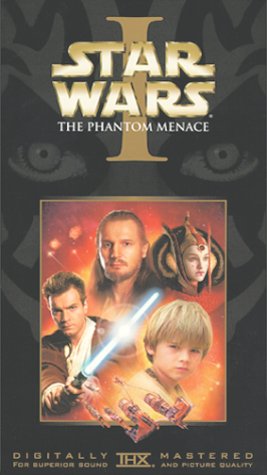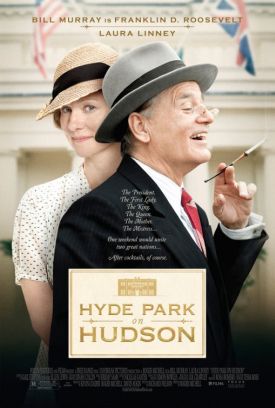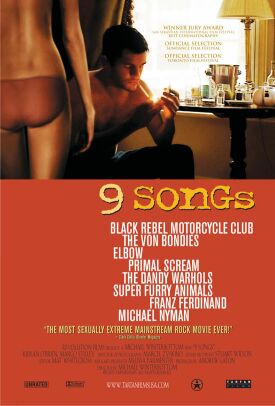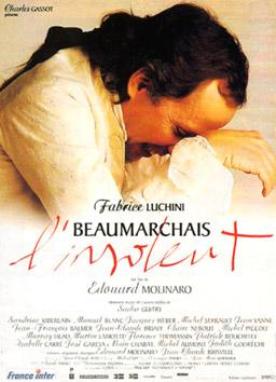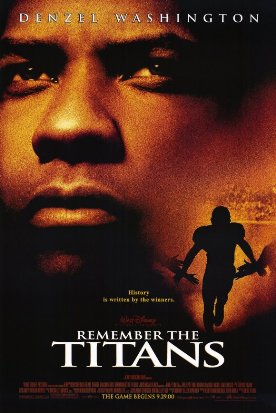Phantom Menace, The (Star Wars: Episode I)
Well, here goes. The following, I know, is an invitation to hate-mail, but I
have to say that Star Wars Episode One: The Phantom Menace, written and
directed by George Lucas, demonstrates a remarkable paucity of imagination. The
thought first came to me in the scene where Senator Palpatine (Ian McDiarmid)
explains to Queen Amidala (Natalie Portman) the state of political life on the
home city-planet of Couresan: “No civility,” he says; “only politics.” Inwardly
I groaned. Here the most brainless journalistic cliché of our times, as
specific to 1990s America as Bill Clinton or O.J. Simpson, is lovingly
transported to a galaxy far away as if it were a universal category of humanoid
behavior, like love or treachery or heroism, and not a mere linguistic tic,
based on the patently false assumption that civility and politics are
disjunctive terms. The anachronistic effect is akin to that of watching the Jedi
knights break into the macarena.
Nor is that all. The Senate is said to be paralysed by an investigation into
groundless charges of corruption against a good leader, Chancellor Valorum
(Terence Stamp). Could this, by chance, be our Bill? At any rate, the film has
by implication adopted the Clintonite formula about the absolute importance of
“moving on” by positing this same legislative inactivity as the reason why
sinister “bureaucrats” have been allowed to take over the government. Their
suzerainty, in turn, allows a mysterious bad guy—who appears only as a
hologram and remains unidentified at the end of the film—and his evil
henchman, Darth Maul (Ray Park), to seize control of Trade Federation troops for
an invasion of Queen Amidala’s planet, Naboo. Are we meant to suppose that
Slobodan Milosevic was likewise emboldened by Clinton’s embroilment in Senate
impeachment proceedings to undertake his campaign in Kosovo?
If so, the roles of the antagonists are here reversed. It is the Slobo-like
bad guy (who also resembles his prototype in launching an ethnic cleansing
campaign against the underwater cities of the harmless and comic Gunga) who
controls thousands of useless war-machines. These are robots with dust-buster
headpieces and collapsible bodies who are fiction’s most incompetent enemy since
Fenimore Cooper’s Indians. Not only are they astonishingly poor marksmen with
their integral ray-guns, their metal parts seem to fit together like Lego
blocks. As they obligingly walk upright and very slowly, they fall before the
light-sabres of the good guys, the seemingly outgunned ground troops Qui-Gon
Jinn (Liam Neeson) and Obi-Wan Kenobi (Ewan McGregor), like ripe wheat before
the reaper’s scythe. Only the Sith lord, Darth Maul, who has learned the Jedi
ways and has a double-edged light sabre, proves a worthy opponent.
Boring! We don’t even have any sense of the latter’s brand of villainy, which
is advertised by his painted face and dark cowl but which otherwise remains
completely inarticulate. He says nothing and dumbly follows orders from the
hologram. Meanwhile, the heroes’ comic sidekick, a cross between a floppy-eared
dog and a dinosaur who is called not Dino but Jar Jar Binks (Ahmed Best), can
never shut up. Moreover, he talks a kind of baby talk—“Dis am berry
bad!”—that gets on the nerves. At one point during the climactic battle
with the Hoover-headed robots (“Ouch time,” says Jar Jar cutely) he is briefly
imperilled: “Jar Jar! Use your boobah!” cries out a companion.
“No have-a da boobah!” says Jar Jar, whereupon the companion tosses him a
little blue ball that, as almost anything larger than a golf-ball would be, is
instantly fatal to his pursuers.
In short, it’s the Teletubbies in space, an impression further reinforced by
the fact that the youngest hero, Anakin Skywalker (Jake Lloyd)—who, we are
given to understand, will grow up to be Darth Vader—is about six years
old. But, although he is only two or three years out of diapers, this prodigy is
said to be able to “fix anything.” Do we sense another cliché here? Ah
yes, it is the by-now famous tyke who must program the VCR for his technically
incompetent parents. Long after VCRs have presumably joined mangles and steam
engines in the technological graveyard, here he still is, tinkering away with
the fabulously sophisticated machines of the future. Though a slave, he has not
only managed to build a championship “pod” racer out of spare parts in his back
yard, he is also allowed to race it at considerable risk to his life against the
champion pod racer of Tattooine, the villainous-looking and blatantly cheating
Sebulba.
Anakin’s mother (Pernilla August) appears to be under heavy sedation
throughout her brief appearance in the picture. She easily consents to Anakin’s
racing his pod and then to his going off with the two Jedi, Qui-Gon and Obi-Wan,
to learn how to be a Jedi himself. “Will I ever see you again?” the little
fellow asks her.
“What do you think?” she replies.
“I. . .hope so,” he hesitates.
And when Qui-Gon half-heartedly suggests that she might like to come with
them, she replies with unusual firmness: “My place is here; my future is here.”
Huh? She prefers to remain a slave? Oh well, perhaps she has a boyfriend. Yet
she also solemnly assures the Jedi that Anakin has no father, and the suggestion
of a virgin birth, together with the unprecedented number of the genetic
Jedi-markers called midicloriants (or something) in his bloodstream, lends
weight to Qui-Gon’s conviction that he is “the chosen one,” come into the
universe to “balance the force”—a suspiciously Manichaean-sounding
enterprise. I expect we shall find out more about this if we can bear to drag
ourselves to the two promised sequels, which are also “prequels” to the original
Star Wars saga of 22 years ago.
But what surprised and delighted us with its wit and cinematic originality
back in 1977 has not worn well. The exotic creatures from other galaxies have
now become all-too-familiar creatures from other movies, even when they have
been repackaged and cosmetically redesigned, and the timeless story of heroism
comes to seem merely silly and exploitative when the hero is a six-year-old
playing computer games. This is a Star Wars that seems to exist for the
sake of the spin-offs—the hats, the T-shirts, the action figures, the
computer games and so forth that made it profitable before it was even released.
Like the pod race and the battles in the movie itself, the movie’s triumph in
the marketplace seems rigged. Star Wars Inc., a division of LucasFilms, is
beginning to look less like the fun planet Naboo, with its quaint medieval
trappings, and more like the Evil Empire.
Discover more from James Bowman
Subscribe to get the latest posts to your email.

